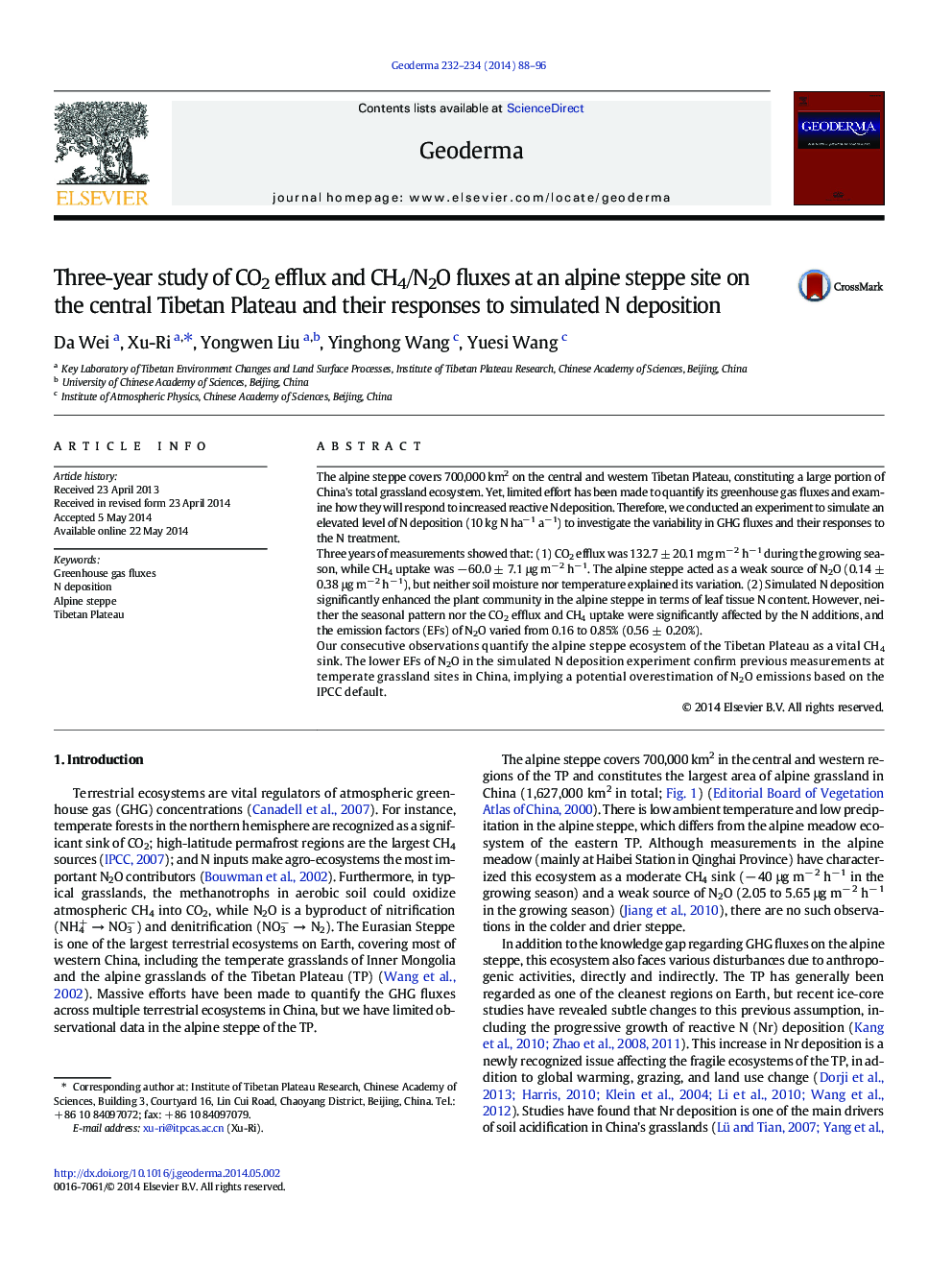| کد مقاله | کد نشریه | سال انتشار | مقاله انگلیسی | نسخه تمام متن |
|---|---|---|---|---|
| 6408701 | 1629469 | 2014 | 9 صفحه PDF | دانلود رایگان |

- We measured GHG fluxes for three years at an alpine steppe site in Tibet.
- Alpine steppe functions as a stronger CH4 sink than alpine meadow.
- Seasonal soil moisture regulates the variations in CO2 efflux and CH4 uptake.
- Simulated N addition boosts plant growth but has limited effects on GHG fluxes.
- The direct N-induced N2O emission factor is lower than the IPCC default.
The alpine steppe covers 700,000 km2 on the central and western Tibetan Plateau, constituting a large portion of China's total grassland ecosystem. Yet, limited effort has been made to quantify its greenhouse gas fluxes and examine how they will respond to increased reactive N deposition. Therefore, we conducted an experiment to simulate an elevated level of N deposition (10 kg N haâ 1 aâ 1) to investigate the variability in GHG fluxes and their responses to the N treatment.Three years of measurements showed that: (1) CO2 efflux was 132.7 ± 20.1 mg mâ 2 hâ 1 during the growing season, while CH4 uptake was â 60.0 ± 7.1 μg mâ 2 hâ 1. The alpine steppe acted as a weak source of N2O (0.14 ± 0.38 μg mâ 2 hâ 1), but neither soil moisture nor temperature explained its variation. (2) Simulated N deposition significantly enhanced the plant community in the alpine steppe in terms of leaf tissue N content. However, neither the seasonal pattern nor the CO2 efflux and CH4 uptake were significantly affected by the N additions, and the emission factors (EFs) of N2O varied from 0.16 to 0.85% (0.56 ± 0.20%).Our consecutive observations quantify the alpine steppe ecosystem of the Tibetan Plateau as a vital CH4 sink. The lower EFs of N2O in the simulated N deposition experiment confirm previous measurements at temperate grassland sites in China, implying a potential overestimation of N2O emissions based on the IPCC default.
Journal: Geoderma - Volumes 232â234, November 2014, Pages 88-96